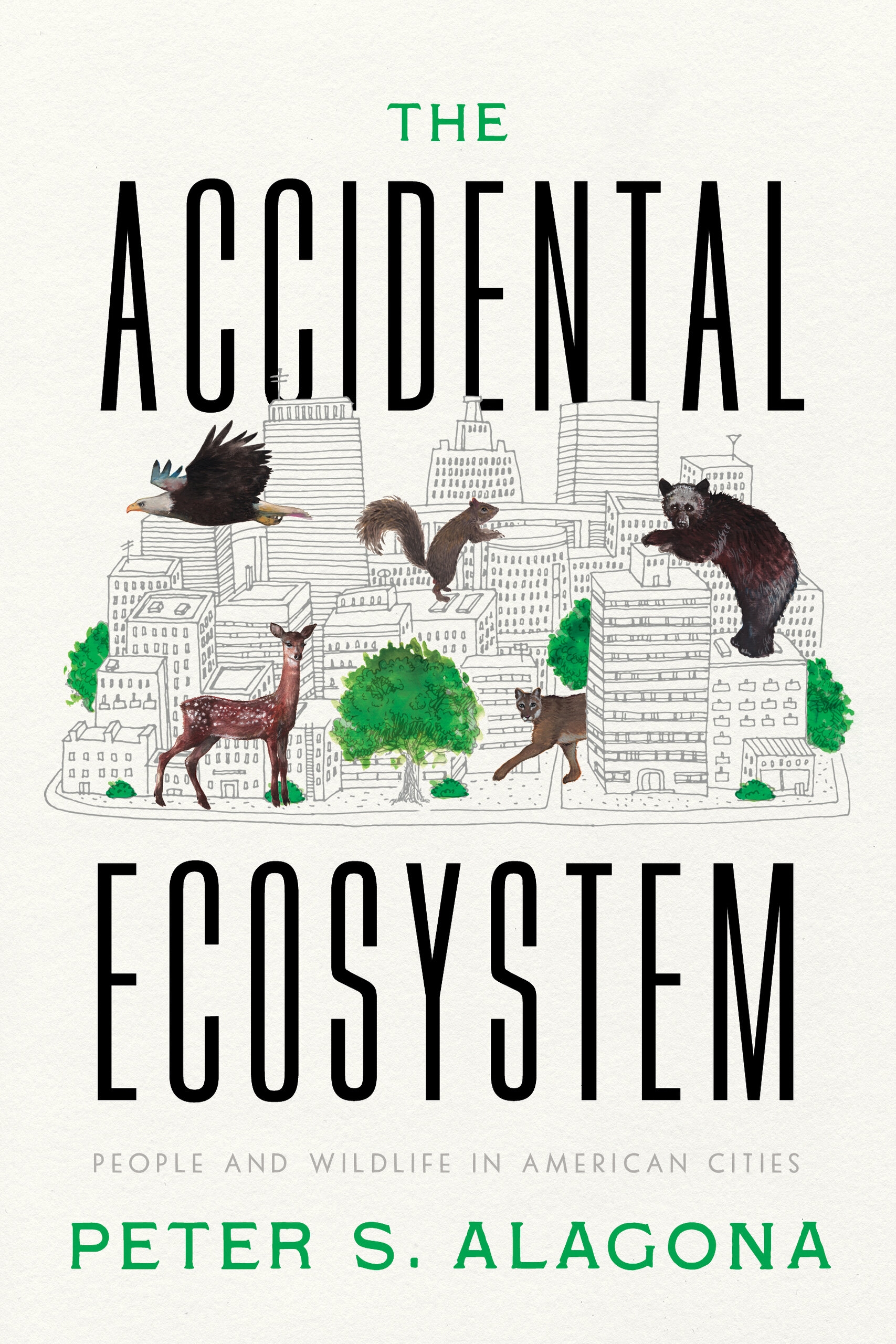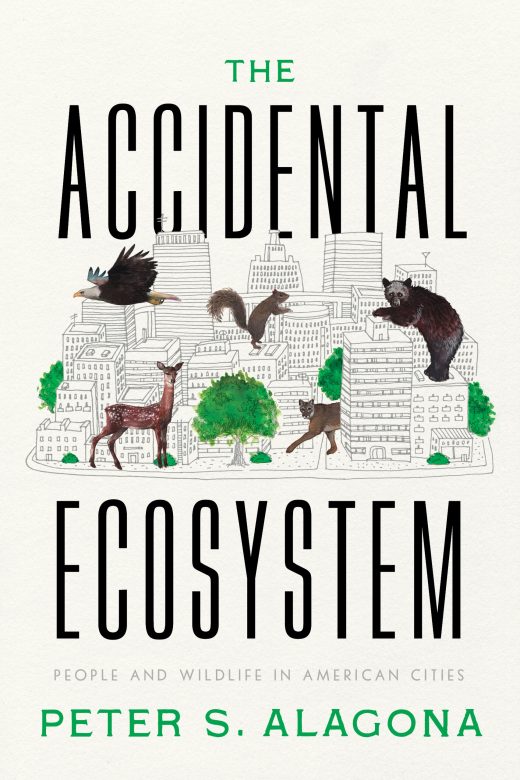Hitting the Books: How mass media transformed coyotes into scapegoats
Hitting the Books: How mass media transformed coyotes into scapegoats
They are here for our delicious trash, not our cultural baggage.

As the boundaries between developed spaces and wildlands continue to blur, the frequency and intensity of human-animal interactions will surely increase. But it won’t just be adorably viral trash pandas and pizza rats whistling on your veranda — it’ll be 30-50 feral hogs in your garbage and birds of prey predating upon your precious pekinese. Next thing you know your daughter’s knocked up and the fine china’s missing! But it wasn’t always like this, Peter Alagona explains in his new book, The Accidental Ecosystem. He explores how and why America’s cities — once largely barren of natural features — have exploded with wildlife over the past 150 years, even as populations have declined in their traditional habitats.
In the excerpt below, Alagona examines our long and complicated relationships with the coyote, one that has lasted for millennia and ranged from reverence to revulsion, a narrative now influenced by the social media hivemind.
Excerpted from The Accidental Ecosystem: People and Wildlife in American Cities by Peter S Alagona, published by the University of California Press. © 2022 by Peter S Alagona.
Urban adapters and exploiters may be prepared for life among people, but are people prepared for life among them? In the 1970s and 1980s, when coyotes started showing up more often in dozens of American cities, residents and officials were unprepared, and many were unwilling to accommodate animals they saw as dangerous interlopers. As one teenager who lost her toy poodle to a coyote told the Los Angeles Times in 1980, “Coyotes make me mad. They take care of our rats, which are really disgusting. But I hate coyotes.” The same year, the Yale social ecology professor Stephen Kellert found that, among US survey respondents, coyotes ranked twelfth from the bottom on a list of “most liked” animals, above cockroaches, wasps, rattlesnakes, and mosquitoes but below turtles, butterflies, swans, and horses. The most-liked animal was the dog, which is so closely related to the coyote that the two can mate in the wild and produce fertile offspring.
In his 2010 book Some We Love, Some We Hate, Some We Eat: Why It’s So Hard to Think Straight about Animals, the anthropologist Hal Herzog wrote that “the way we think about other species often defies logic.” This is not to say that our ideas about animals are arbitrary, but rather that the ways we think about them are shaped as much by history, culture, and psychology as by physics, chemistry, or biology. In the absence of this social context, people’s ideas about and actions toward other animals can seem nonsensical, hypocritical, or downright weird.
Animals are often presumed innocent or guilty — and thus treated with respect or contempt — based on the baggage our culture, through art or literature or tradition, has forced them to carry. An animal’s inherent or perceived qualities also matter. We tend to give the benefit of the doubt to creatures that are big, that we think are cute, pretty, majestic, or humanlike, that seem to embody admirable qualities such as grit, entrepreneurship, or good parenting, or that at the very least leave us alone. Yet such perceptions rarely reflect a species’s real behavior or ecology. Many people see rats as disgusting or dangerous, even though most rats pose little threat to most people most of the time. Cats, meanwhile, seem friendly and cuddly despite being ferocious predators and disease-ridden ecological wrecking balls.
Mass and social media play especially important roles in shaping perceptions. When large and charismatic wildlife species started showing up in many American cities more frequently in the 1970s and 1980s, around the time of Kelly Keen’s death, newspapers and TV shows often adopted one of two tones: irony or sensationalism. Ironic images and stories emphasized how surprising it was to see wild animals showing up in supposedly civilized areas. Sensationalistic stories emphasized conflicts between people and wildlife. They often used military metaphors about wars and battles or echoed the paranoid, racist, and xenophobic tropes of the day, comparing wildlife to undocumented immigrants, gang members, criminals, terrorists, and “super predators.”
These images were circulating in the media during an era when the proportion of Americans with firsthand experiences of wild places was flattening or even declining. During the 1970s and 1980s, \consumer products and better infrastructure fueled the growth of outdoor sports, including non hunting wildlife activities like bird watching and photography. Yet technology, which enabled so many people to enjoy the outdoors, also began inserting itself into these same people’s encounters with nature, first mediating and then replacing them. Video screens allowed Americans to spend more time watching virtual creatures and less time interacting with actual animals. Animal-themed visual media exploded in popularity, while zoos and museums struggled to attract patrons. Between 1995 and 2014, even the National Park system saw its annual per capita visitation slide by 4 percent.
It is not surprising, therefore, that the people who encountered wildlife in cities often reacted by treating these animals like the caricatures they read about in the news or saw on TV. For many, creatures like coyotes looked like either cuddly pets or bloodthirsty killers. Neither image was accurate, of course, but both had real world consequences.
When people who viewed coyotes with suspicion saw them in urban areas, often the first thing they did was call the police. Involving the police tended to turn a non problem into a problem or make a bad problem worse. Yet moving away from a law-enforcement-based approach has been difficult.
As late as 2015, New York City, which saw its first coyote twenty years earlier, was still often approaching these creatures as outlaws. That April, the New York Police Department, responding to an early-morning 911 call reporting a coyote in Riverside Park on Manhattan’s Upper West Side, deployed tranquilizer guns, patrol cars, and helicopters. The ensuing three-hour chase ended when officers failed to corner the fugitive canine. When questioned about the costly and time-consuming incident, the NYPD contradicted a statement previously issued by the Department of Parks and Recreation saying that the city would no longer pursue coyotes that did not appear to pose a threat. It turned out that the two departments did not have a written agreement spelling out this policy. NYPD officers were not trained on how to deal with coyotes, but it was up to them to decide how to respond. The result was predictable: the same excessive force that has plagued modern policing in general was mobilized to combat a wild animal that presented little if any risk.
Over time, some cities and their residents adjusted to their new reality of living with coyotes. Jurisdictions with ample budgets, supportive residents, and helpful institutions like zoos and museums developed research, education, conservation, and citizen science programs. Some parks and police departments started working together to develop new policies and practices, limiting the use of force and trying, with some difficulty, to respond only to genuine emergencies. One of the key messages wildlife officials stressed was that the decision to launch a response should depend on an animal’s behavior — whether it appeared injured or sick or was acting aggressively — and not its mere presence.
As such messages have percolated, attitudes have evolved. In New York, as people have become more accustomed to living with coyotes, fear has given way to tolerance and even a tenuous kind of acceptance. In some neighborhoods, individual coyotes have become mascots with names, backstories, and social media accounts. Few people actually trust coyotes, and most people don’t want them prowling around their backyards, schools, or playgrounds, but many communities have shown a growing willingness to embrace their furry neighbors.
As early as 2008, studies from suburban New York showed that most residents appreciated coyotes, enjoyed having them around, and even “found the likelihood of injury from a coyote acceptable.” But people’s willingness to live alongside coyotes in their communities dropped quickly when incidents occurred, suggesting that tolerance for them remained fragile. Overall, however, the longer most people lived with urban wildlife like coyotes, the more they viewed these creatures not as threats but as natural and beneficial members of multispecies urban communities.

(16)


